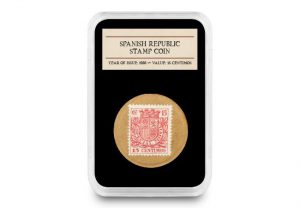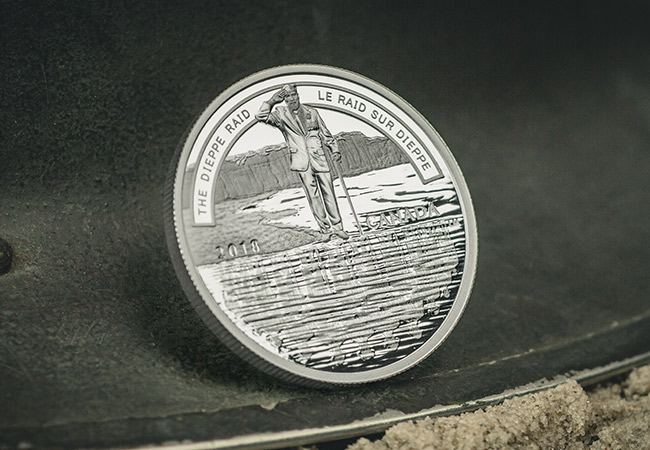First World War
Imagine using a cup, a stamp, or cardboard as a coin…
Today the coins you find in your change are all produced by the Royal Mint. It’s hard to imagine what life would be like if coins, and the metal to make them, disappeared.
When people have had to go to extreme lengths in the face of emergency, it has produced some of the most intriguing and interesting currencies around. And here are six of the most unusual currencies ever issued, and what drove people to create them.
The coins made from a drinking cup
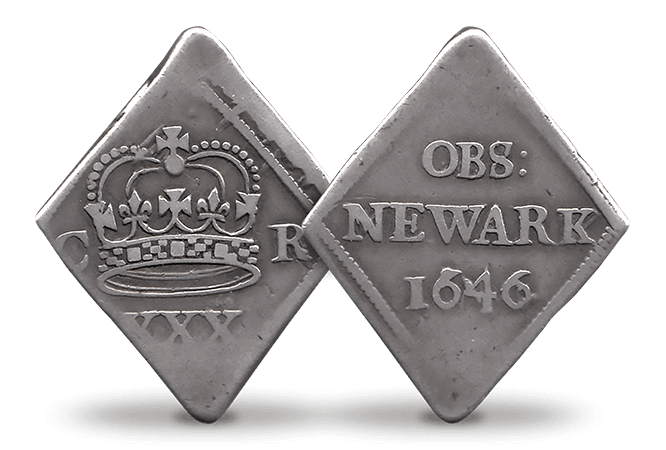
In 1646 in a town under siege, with no incoming money, the people of Newark needed to find a way to pay soldiers for protection. So they reached for whatever metal they had available to make coins – and that meant their cutlery! Silver cups and plates were surrendered, cut up into small diamond shaped pieces, and had a denomination stamped onto them.
Because of the way these coins were made, you could sometimes see the pattern of the cup or plate from which the coins were made. Understandably these coins, which surely belong in a museum, are hugely desirable among collectors and are rarely available.
The notes that were issued to be devalued
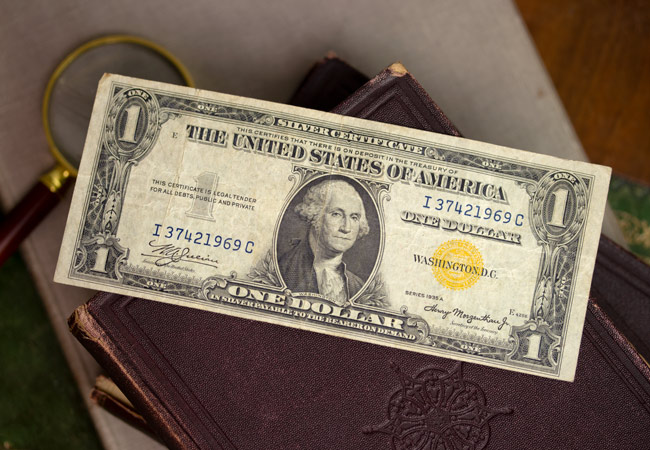
It seems odd that a government would issue money just for it to be devalued. But during WWII when the American army was based in North Africa this is exactly what happened. The American government was concerned that if the Germans were to mount a successful attack, they could take over the currency. Therefore, all notes used to pay soldiers based in North Africa had a yellow seal added to them. This meant that should the Germans take over, the notes could be easily identified by their yellow seal and instantly devalued.
The Russian stamps used as German propaganda
During WW1 the Russian government found it increasingly difficult to issue coins. Instead, they turned to ‘currency stamps’ printed on thin cardboard instead of normal stamp paper. Using stamps instead of coins was a way of saving precious metal for the war effort.
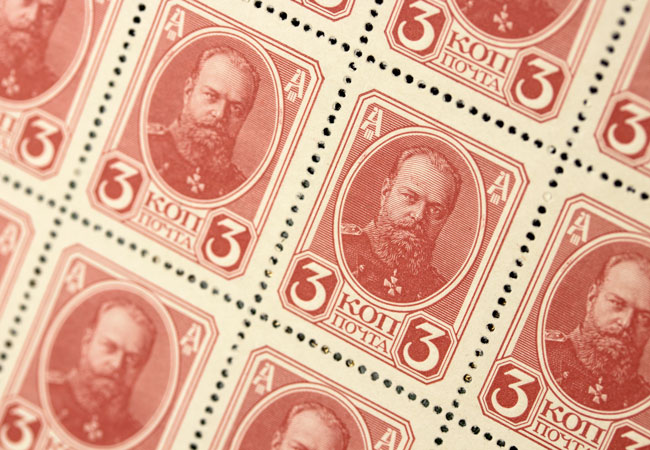
Several denominations of ‘currency’ were issued, with a statement on the reverse stating that each stamp had the circulating equivalent of Silver coins. However some of these stamps soon landed in the hands of Germans who counterfeited them but with one clever detail – the statement on the reverse was changed to an anti-Russian message. The idea was to destroy confidence in the Russian government and devalue the currency.
An unusual English denomination
George III’s reign is known for the vast number of interesting numismatic pieces issued, and the Bank of England emergency tokens are no different. Conflict in George III’s reign had caused financial panic, and thousands of people hoarded silver coins out of fear.
The Royal Mint’s limited ability to issue coins posed a problem as they could not make enough coins for the demand, so eyes turned to the Bank of England. An agreement was made that allowed the Bank to issue emergency currency. However technically speaking these were tokens and not coins, which is why they appear in the unusual denominations such as 1s 6d or 1 Dollar.
Why money was burnt in revolutionary France
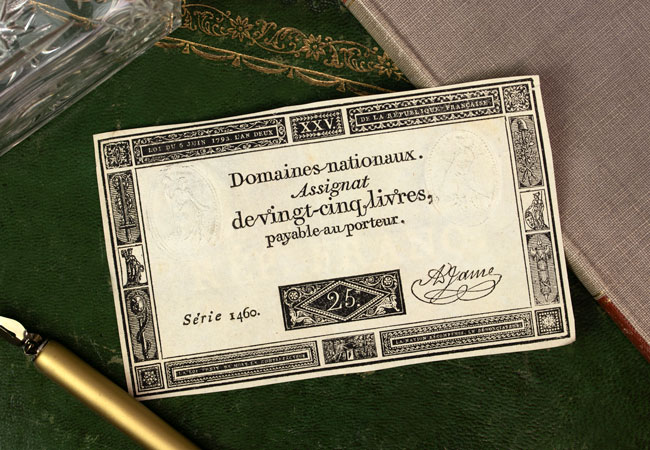
In revolutionary France in the early 1790s, the government issued paper money, known as Assignats, backed by the value of clergy property. The government continued to print money, and faced with an influx of counterfeits from Britain, the value of these Assignats soon reached a massive 45 Billion Livres, despite the value of clergy property only being 3 Billion Livres.
In 1796, the notes had lost all of their value and were publicly burned, to be replaced with a new paper money. Any of these surviving notes are incredibly rare as most of them were destroyed, making them very desirable among collectors.
How a Civil War turned a stamp into currency
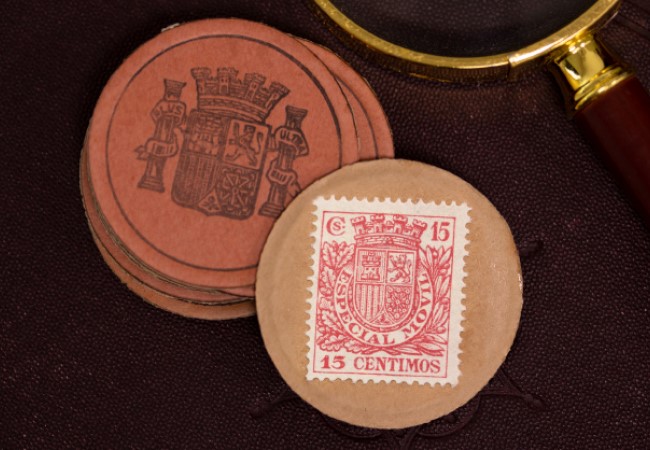
It’s hard to imagine a small paper stamp, issued over 80 years ago, being used to pay for goods and services. But in Spain in 1938 that’s exactly what happened.
The Civil War caused the public to hoard coins out of fear, and so they all but disappeared from circulation. Because metal was in limited supply, the government turned readily available stamps into ‘coins’. Unlike Russian emergency stamp currency, these stamps were welded onto a special board with the coat of arms printed onto the reverse. The stamp value gave these new ‘coins’ a denomination, and they were released into circulation to help towns and cities trade.
With such a delicate nature and small number, it’s no wonder that these coins are scarce and difficult to track down today.
Nowadays the Royal Mint is well suited to meeting our coin demands so it’s unlikely we’ll ever need to use stamps or cutlery in place of coins! Emergency currency is always a fascinating area for collectors, with some of the rarest and most unique issues having appeared out of difficult and troubled times. It’s not often that these emergency issues appear on the market – but it’s certainly worth keeping an eye out for them!
If you’re interested…
Today you can own one of these unusual and fascinating numismatic issues – a Spanish 15 Centimos ‘Coin’. There are only an extremely limited number of these issues available worldwide, and considering the fascinating story behind these issues, our stock is likely to be snapped up fast.
The 100 year old tin that was delivered to ‘every sailor afloat and every soldier at the front’…
As they left for war in Autumn 1914, the soldiers, and the country, believed that it would all be over by Christmas of that year. We know now that the brutal conflict was to drag on for another 4 years, but Christmas 1914 became famous for being the first respite from the war.
Many felt the need to show give a small token of appreciation to those who had put their lives on the line. And so, on 30th October 1914, Princess Mary launched her Christmas Gift fund. She asked the public:
“I want you now to help me send a Christmas present from the whole nation to every sailor afloat and every soldier at the front.”
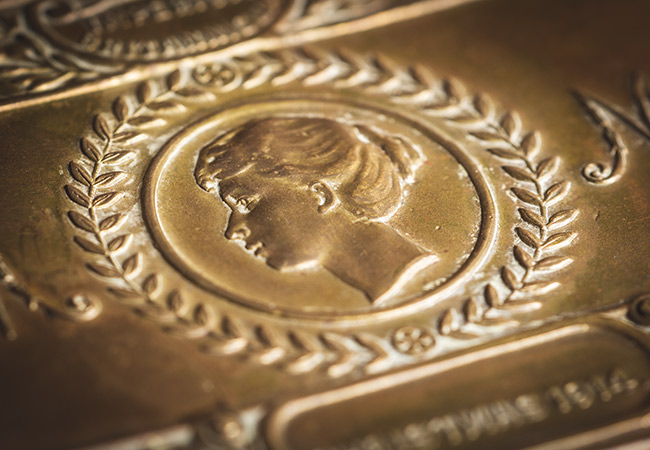
And they did. Her appeal was met with an enthusiastic response, eventually raising over £162,000 (an incredible sum at the time). This led to the memorable Princess Mary’s Gift Box. It was a beautiful embossed brass box, 128 x 84 x 30mm (5 x 3.3 x 1.2 inches), containing one ounce of pipe tobacco, 20 cigarettes, pipe, a tinder lighter, a Christmas card and a photo of Princess Mary.
On Christmas Day 1914 alone, almost 500,000 Christmas tins were distributed to British service personnel. The boxes were sent to “every sailor afloat and every soldier at the front” in accordance with Princess Mary’s wishes.
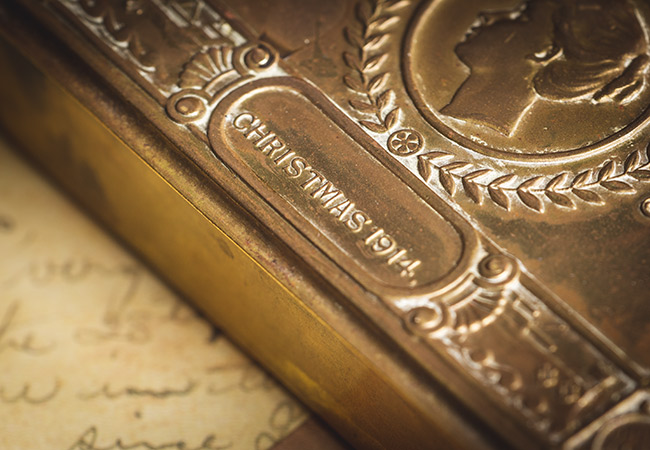
A large number of these tins were subsequently damaged in the war, with many being blown apart by shells or corroded in the wet conditions in the trench. However, the boxes that have survived are now distinctive mementoes of the war’s first Christmas.
They are also absolutely fascinating historic artefacts – each tin is totally unique and may have even been there in the trenches 100 years ago protecting a young tommy’s keepsakes. They each tell their own story, and just looking at them you can see the small bits of damage, the smells and stains that tell the story of how they survived 100 years to remind us of the soldiers who suffered the extreme conditions of the Great War.
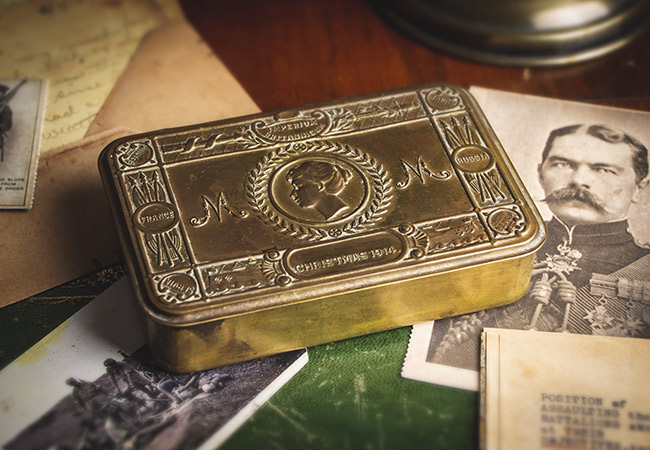
With the festive season approaching, it is especially important to remember those soldiers who would have received one of these tins. It’s hard not to think about a young tommy, sitting in his trench on Christmas Day, opening his Princess Mary Christmas tin as carols drifted across No-Man’s Land.
If you’re interested…
We have a limited number of genuine Christmas Tins available and ready to deliver for Christmas, with 5 coins all from 1918. But with such a limited number available you will need to be quick to own this ultimate Christmas gift… Check out the video to see Adam explain what makes this tin so special or click here to order yours now >>>
Before Utah, Omaha, Gold, Juno, and Sword there was Dieppe
Now home to around 30,500,the picturesque port of Dieppe on the Normandy coast of France was once the site of what’s perhaps the most conflicting military operation of WWII.
Some hail it as an essential lesson, to help future troops and pave the way for victory on D-Day. Whilst others see it as the most ill-fated and disastrous military effort of The War.
A test of Hitler’s “Fortress Europe”
The year is 1942, and on the morning of 19th August, alongside 1,000 British troops and 50 American Rangers, 5,000 Canadian troops began their assault on the small French port town of Dieppe. This was Canada’s first army offensive in Europe, and the results left many thinking it could well be their last.
Ultimately, the raid was strategically designed to test the Allies’ ability to launch amphibious assaults against Adolf Hitler’s “Fortress Europe”. This would inform future plans to bring about an end to the conflict.
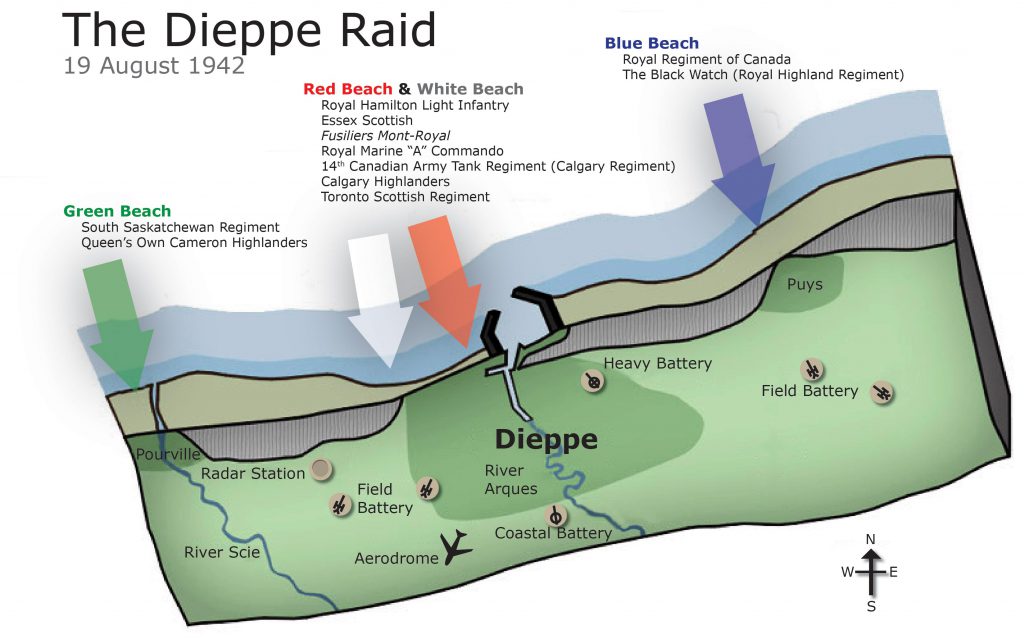
(Image courtesy of The Canadian Encyclopaedia: https://www.thecanadianencyclopedia.ca/en/article/dieppe-raid )
The co-ordinated air, land and sea assault was codenamed Operation Jubilee. Allied forces landed on the shores of Dieppe with the intention of occupying the town for a brief period of time in which they would gain intelligence and entice the Luftwaffe – German Air Force – in to open battle to wear them down.
But from the beginning, nothing went as planned. Less than six hours in the commanders called a retreat.
High costs
The troops arriving via the sea unexpectedly encountered a German fleet, and the ensuing battle at sea robbed the Allies of their element of surprise. This was what they were hoping would give them the upper hand. Out of the four beaches targeted, none of the attacks were classed as successful, resulting in severe loss of life and assets. With the element of surprise lost, the Allies and their armoured support were late to arrive at their designated attack points meaning many were slaughtered with little preparation to defend themselves.
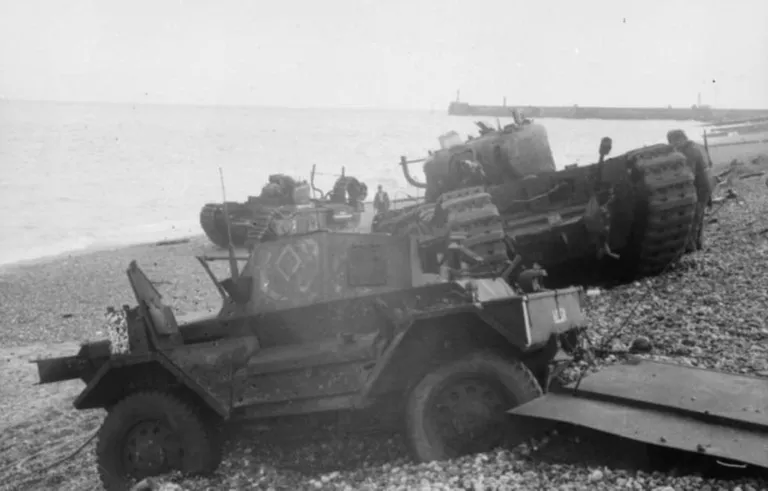
(Image courtesy of ThoughtCo. https://www.thoughtco.com/world-war-ii-dieppe-raid-2361490)
The Calgary Tanks that did make it ashore were poorly equipped for the terrain and struggled to move across the pebbled beaches. Those that did make it across the beach were unable to destroy the enemy’s concrete barriers blocking their path, their guns were not strong enough. Eventually these tanks provided covering fire for the force’s evacuation.
German casualties were light. In comparison the Allies suffered, especially the Canadians: over 900 were killed, 2,400 wounded and a further 1,900 taken prisoner. Fewer than half the Canadians who departed for Dieppe returned.
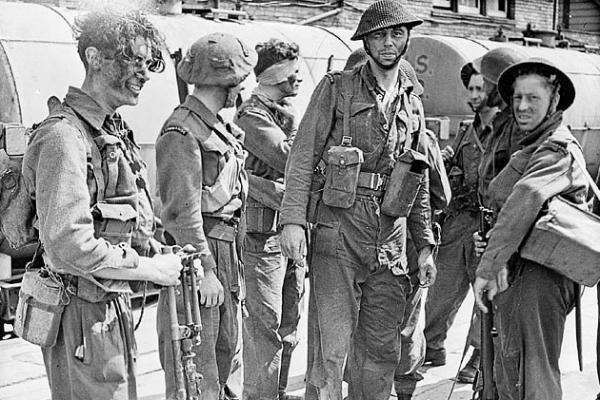
(Image courtesy of France24: https://www.france24.com/en/20170819-france-canada-world-war-two-doomed-dieppe-raid)
Lessons learned
Allied commanders knew the raid was risky. But none imagined it would be such a terrible failure, with so much loss of life. It was believed the element of surprise would be their greatest weapon, allowing landing troops to overcome German defenders and occupy the town. But little thought was given to the importance of air superiority and the need for overwhelming firepower.
Despite its failure, the raid was a pivotal moment in WWII and provided invaluable lessons for the Allies. It made clear the difficulties of assaulting a well-defended port and the need for better intelligence on conditions and communication amongst the troops – they could not rely solely on the element of surprise.
Two years later, the D-Day landings would be backed up by massive naval artillery support, dominance over the skies, and heavy firepower — three essential factors missing at Dieppe. Finally, following D-Day success, on 1st September 1944, Dieppe was liberated.
If you’re interested…
The Royal Canadian Mint issued a 1oz Silver Proof coin to commemorate the 75th anniversary of the Dieppe raid. It’s been specially designed as a powerful tribute to the brave soldiers who sacrificed their lives.
Unsurprisingly this coin is completely sold out at the mint. But we have a limited number available for UK collectors.

